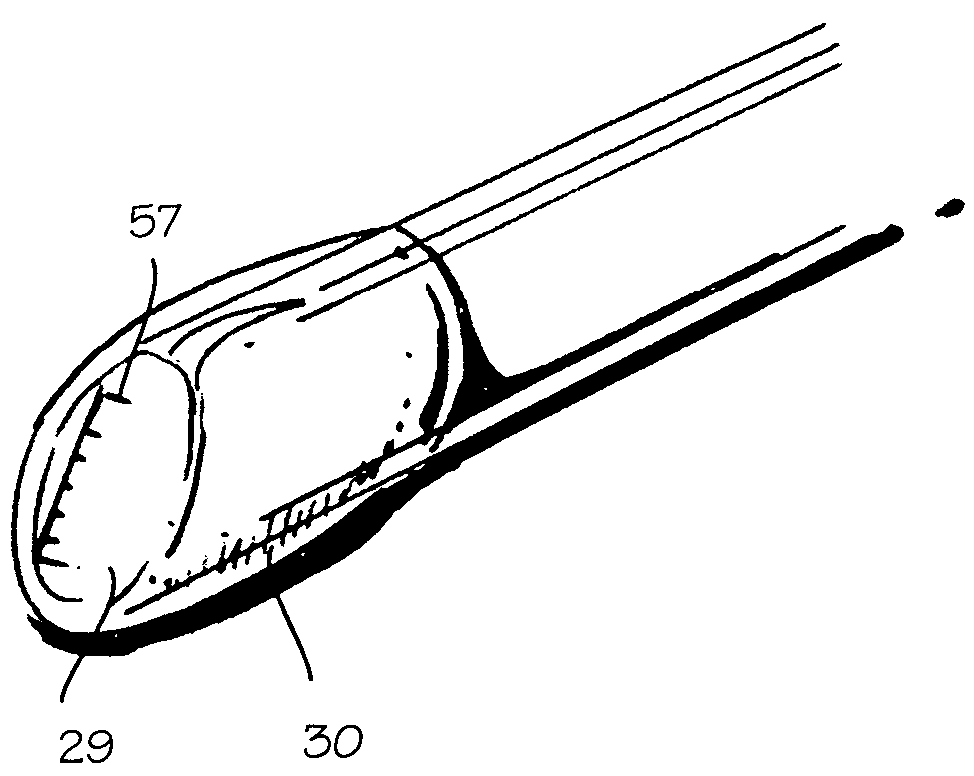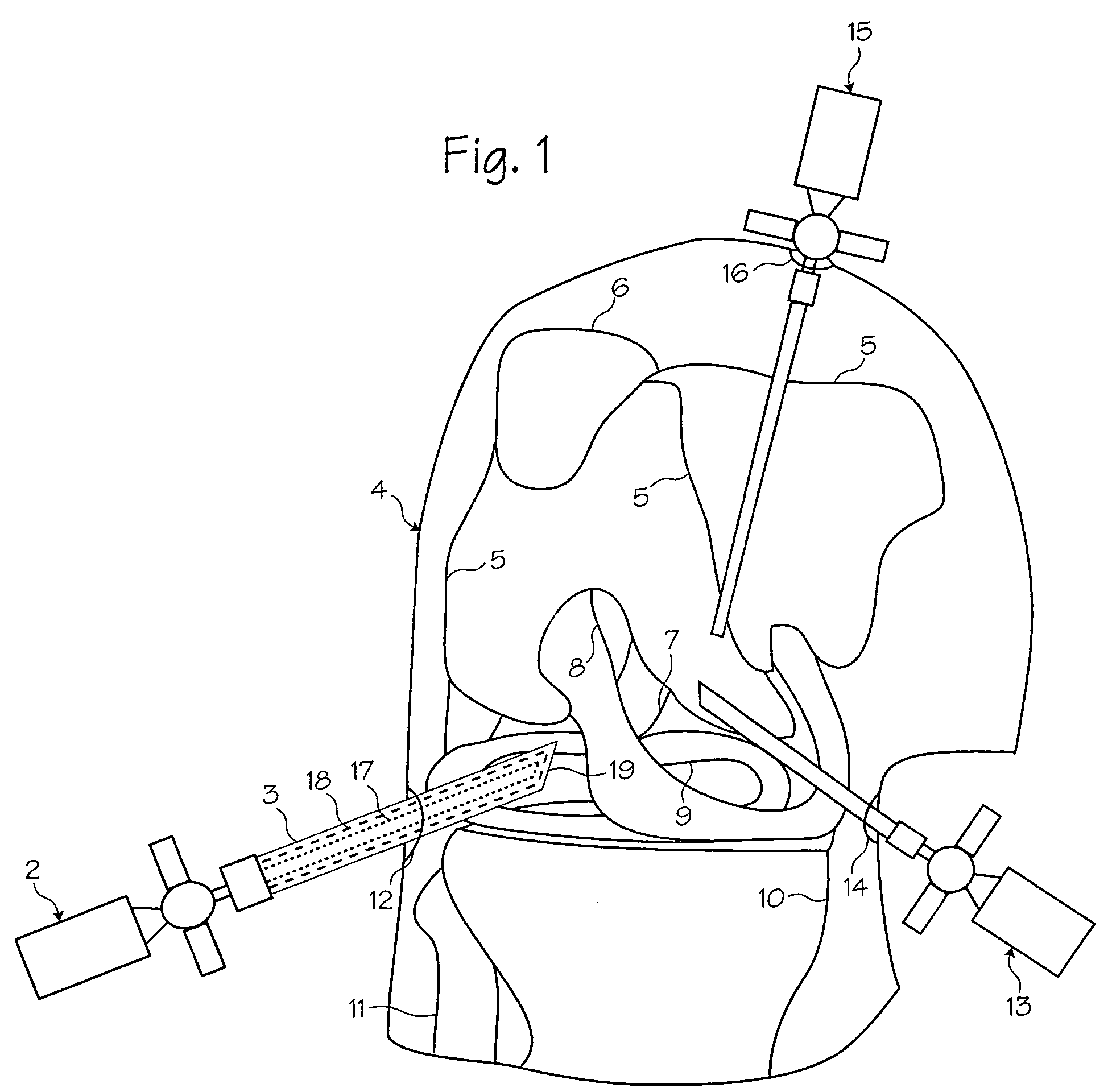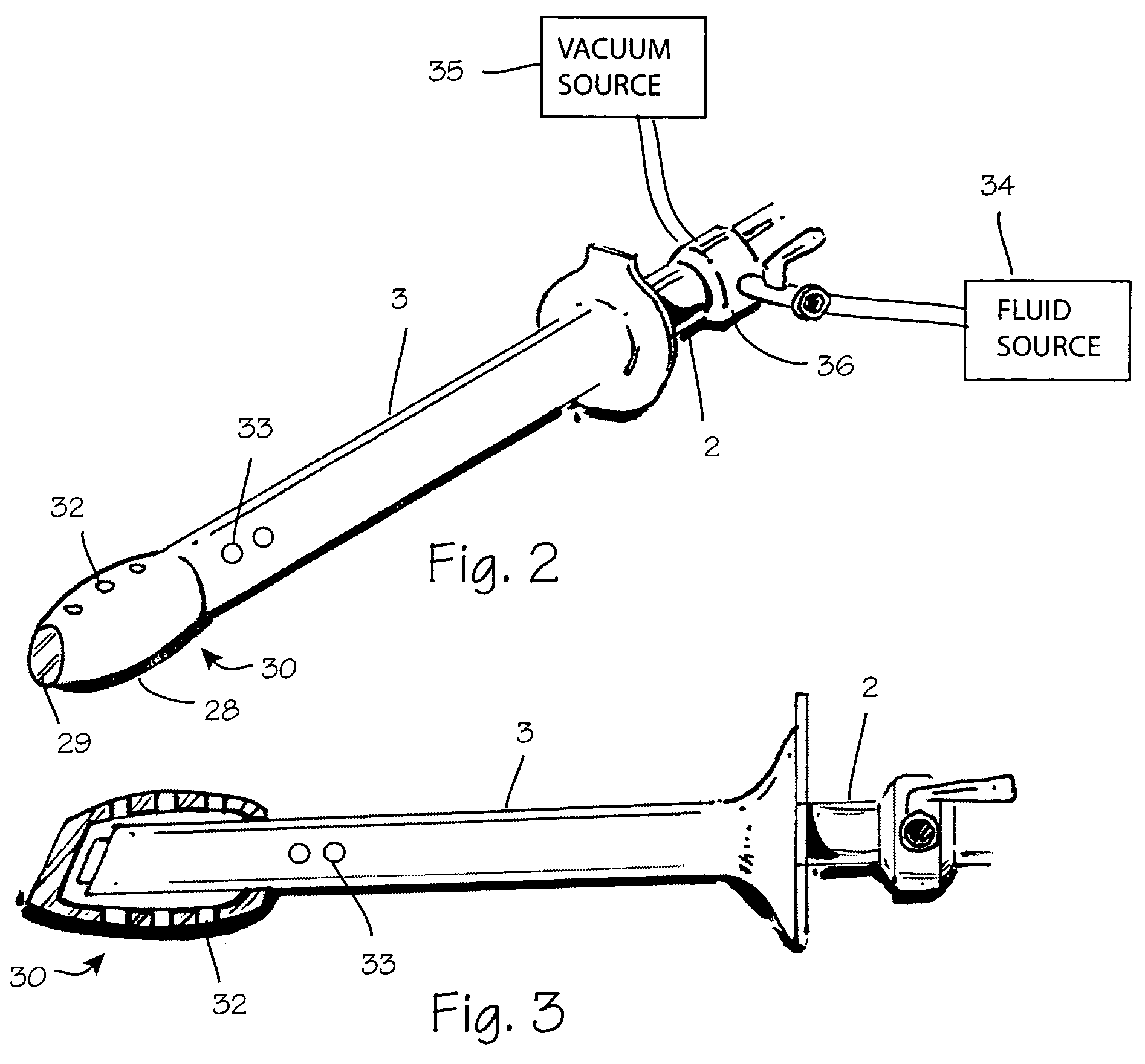Protective cap for arthroscopic instruments
a protective cap and arthroscopic technology, applied in the field of arthroscopic surgical instruments, can solve the problems of shortening the useful life of the prosthetic, affecting the patient's recovery, and requiring additional, painful surgeries to correct the problem, so as to prevent accidental damage to the arthroscope
- Summary
- Abstract
- Description
- Claims
- Application Information
AI Technical Summary
Benefits of technology
Problems solved by technology
Method used
Image
Examples
Embodiment Construction
[0019]FIG. 1 shows a method of performing arthroscopic surgery on a patient using an arthroscopic instrument 2 sheathed in an atraumatic introducer sheath 3. (The various parts of the arthroscope are shown in phantom to indicate their positions inside the sheath.) Various anatomical landmarks in a patient's knee 4 are shown for reference, including the femur 5, patella 6, posterior cruciate ligament 7, anterior cruciate ligament 8, meniscus 9, tibia 10 and fibula 11. During surgery, the surgeon introduces the arthroscope 2 into the knee via a first incision 12 in order to visualize the surgical field. A trimming instrument 13 is introduced through a second incision 14 to remove or trim tissue that the surgeon determines should be removed or trimmed. Optionally, an irrigating instrument 15 may be introduced through a third incision 16 in order to irrigate the surgical field and thereby maintain a clear view. As illustrated below, a combined arthroscope and inflow / outflow atraumatic s...
PUM
 Login to View More
Login to View More Abstract
Description
Claims
Application Information
 Login to View More
Login to View More - R&D
- Intellectual Property
- Life Sciences
- Materials
- Tech Scout
- Unparalleled Data Quality
- Higher Quality Content
- 60% Fewer Hallucinations
Browse by: Latest US Patents, China's latest patents, Technical Efficacy Thesaurus, Application Domain, Technology Topic, Popular Technical Reports.
© 2025 PatSnap. All rights reserved.Legal|Privacy policy|Modern Slavery Act Transparency Statement|Sitemap|About US| Contact US: help@patsnap.com



